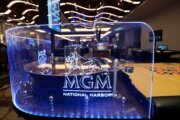WASHINGTON — There are some “official” economic indicators that many people put faith in. Everything from the job report, to GDP growth, to consumer spending give the public an idea of where the market is heading. However, beyond the more serious indicators, there are some unusual and occasionally quirky ones that can offer the same insight — although they might be a tad less quantifiable.
Here’s a sampling of some of my favorite unusual economic indicators to keep an eye on:
Super Bowl winners: A trend emerges when you look at the winner of The Super Bowl, where the market does better in years that NFC teams win. Historically speaking, the Super Bowl Indicator boasts an 80 percent accuracy rate — although it was wrong in the last two years. This year, the Philadelphia Eagles, an NFC team, won, which bodes well for the market.
The “Sports Illustrated” cover model’s nationality: Perhaps for obvious reasons, one of the most popular issues of “Sports Illustrated” is its annual swimsuit edition. But there is also an interesting twist linked to the model who appears on the cover of the issue: When the model is from the U.S., the S&P 500 tends to generate a return above its historical rate, while a non-American cover model has seen under-performance by the S&P 500 for the year. On Feb. 13, they announced American born Danielle Herrington — another positive indicator.
Attractive servers in restaurants: Back in 2009, Hugo Lindgren of “New York Magazine” coined this theory, which he actually called the “Hot Waitress Economic Index.” It says that the “hotter” the waiter or waitress serving you in a restaurant, the weaker the economy is. Lindgren’s assumption was that good-looking people tend to find higher-paying jobs in good times.
Consumption of beer: In bad times, consumers often try to cut back to save a buck, and consumption of alcoholic beverages is often on the list of things to go. In Europe from 2008 to 2010, they experienced a “beer recession” in addition to its debt crisis.
The width and color of ties: Another physical cue to the state of the economy might be the size and color of men’s ties. In good times, the theory goes, men tend to wear colorful ties in hues of pink or fuchsia, as opposed to dark and bland colors in downturns. They also go for skinnier ties in good times and wider ones in bad times, which supposedly reflects reliability and trustworthiness.
The rise of pet thefts: If you see a proliferation of missing pet signs in your neighborhood, watch out. An uptick in missing pets, especially dogs, is considered by some a strong indicator of bad times, since the thieves are banking on a reward, or, worse, a chance to sell your pet on the black market for extra cash.
Sales of lipstick: One closely watched segment of personal spending that may predict the health of the economy is personal luxuries, such as lipstick and nail polish. Studies have found that as the economy tanks, sales of lipstick can surge as consumers look for a relatively affordable way to splurge.
Coupon Redemption: Back in 2009, thanks to the recession, coupon clipping was at an all time high, hitting 3.3 billion coupons redeemed, according to Inmar Inc. If you find the grocery lines slowing down as people redeem coupons, it may be a sign of bad times.
The sale of men’s underwear: Before the most recent recession, Federal Reserve Chairman Alan Greenspan had a reputation as someone who had a knack for seeing around the corner when it came to the market. Reportedly, one of the leading indicators he looked at for his predictions was sales of men’s underwear, the ultimate non-luxury purchase. If sales of underwear dipped, that meant that income was down and trouble loomed.
The supply of cardboard boxes: As all of us have become more comfortable shopping online for just about everything through sites such as Amazon, the site of brown cardboard boxes sitting on porches has become commonplace. That’s why watching orders for cardboard boxes has become a way to predict how retailers see the coming month. If they’re ordering more boxes, good times may soon follow.
Of course the predictive power of any of these indicators is questionable. What these do show, however, is that the effects of economic strength or weakness are far-reaching and occasionally amusing.





